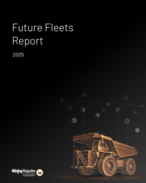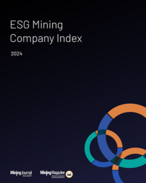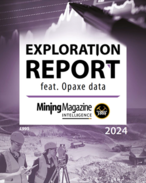This article is 16 years old. Images might not display.
Christmas is over and it is the season for New Year’s resolutions. What should yours be?
With the current drop in commodity prices and market volatility you can be sure that sometime soon your boss will ask: “What are you doing about reducing your costs?”
Beat him to the punch and make an organisational resolution to cut costs – the right way.
When it comes to cutting costs, all too often organisations respond with a disorganised, scattergun approach. Indiscriminate cuts do not provide sustainable results.
They may severely impact on your business’s ability to take advantage of subsequent opportunities.
Careful consideration of how you achieve those cost reductions will allow you to save money and position your company for future growth.
You can start this process by looking at each cost element in your business and deciding which “lever” is appropriate for the change you are seeking.
The levers and order which we use to typically analyse costs are:
1. Non-essential usage: usage that is readily identifiable as non-essential, such as absenteeism, and which can typically be impacted through achieving rapid behavioural change using PIP’s SPIN methodology (this involves setting key performance indicators and reviewing performance against them in a short and continuous cycle).
At a coal mining site we were able to reduce absenteeism by 43% using this methodology.
The project involved supervisors following up all absenteeism with a call that day, weekly team meetings that included a review of absenteeism for that team and the results of all other teams onsite and managers having absenteeism included as a KPI in their regular reviews.
2. “Essential” usage: usage where detailed root cause analysis must be completed before usage can be effectively reduced.
The ideal tool for this is the value driver tree. These are a visual picture of the gears that power a business.
A good driver tree lets you see what impact each “gear” has on the business. Then it’s a matter of prioritising the highest value and easiest gears to pull to improve the business.
For example, the water treatment plant at a remote mining site cost $3 million a year to operate.
Using a driver tree we identified usage, chemical and labour costs as the highest costs.
By altering the type, location and timing of chemical dosing, as well as training everyone in water conservation, a 48% reduction in water costs was possible.
3. Price and terms: strategic sourcing or renegotiation of price and terms.
As a general rule, we would tend to apply the price lever after the two usage levers above have been tackled, because usage work can fundamentally change the understanding of what really needs to be purchased.
That notwithstanding, we still manage to achieve results of 10% reduction in spend even with global clients with strong procurement groups.
A good example was an electrolytic smelter where cathodes were a major cost. There we reverse-engineered the cathode supplier’s operation to develop a detailed model of its costs and margins.
Discussions then took place with the supplier achieving a 20% reduction in cost.
At the same time we reviewed cathode usage and this further reduced costs by more than 30%, for a total cost reduction of over 50%.
4. Added value analysis: provides a fourth approach to cost reduction.
This involves assessing whether each function adds more value than it costs and is commonly used for assessing cost reduction in support services and other areas of overhead.
For example, in the current climate, where recruiting has dipped sharply, is your recruiting team delivering enough benefits given its size?
5. Wiring: implementing systems, processes and skills that are needed to “hard-wire” cost reduction ideas and to drive improvements.
By improving the planning and scheduling of industrial cleaners at a large smelting site we were able to save almost 50% on this spend item.
To do this we set up a system of initial spending reviews, then KPIs and performance reviews for the revised work plans.
Key to this process was holding superintendents and managers accountable for the new KPIs and reviewing their performance against them at least weekly.
Cutting costs is about more than achieving a dollar target. It is about spending the right amount of money on only the things you really need and ensuring your business is wired to sustainably do so.
Careful consideration of how you achieve those cost reductions will allow you to save money and position your company for future growth.
James Bridgers is an associate principal at results delivery firm Partners in Performance, which identifies and delivers rapid performance improvements in industrial, resources and services companies. The company’s clients include iron ore, base metals and coal miners in Australia and around the world.























